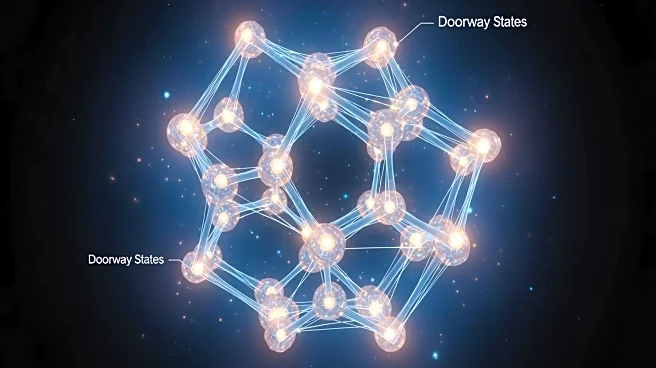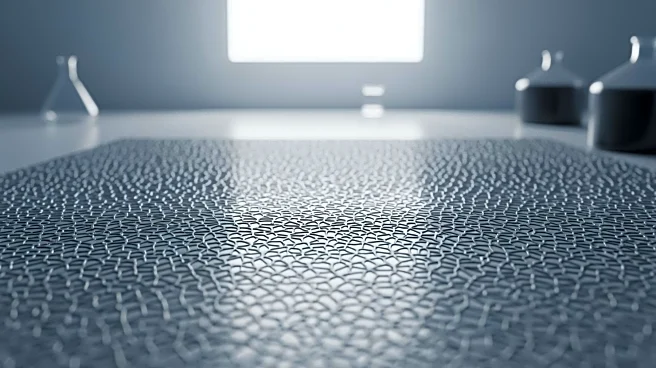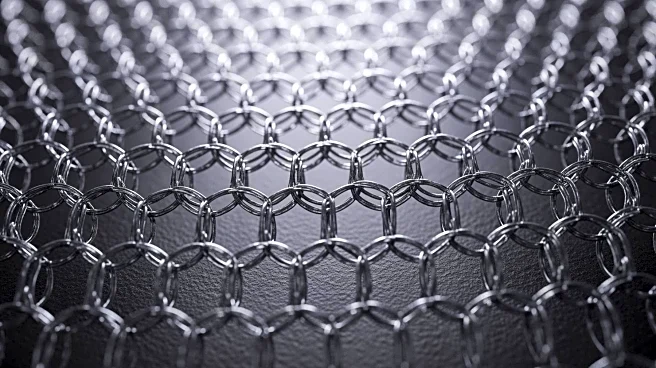What's Happening?
Researchers at TU Wien have uncovered a mechanism by which electrons escape from solid materials, likened to a frog finding an opening to jump out of a box. This discovery revolves around 'doorway states,'
specific quantum states that allow electrons to exit the material when they gain sufficient energy. The study, led by Anna Niggas and Prof. Richard Wilhelm, reveals that not all electrons with enough energy can escape; they must occupy these doorway states. This finding resolves discrepancies between theoretical models and experimental results, particularly in materials like graphene, where electron behavior varies despite similar energy levels.
Why It's Important?
The discovery of doorway states is significant for material science and technology development. It provides a deeper understanding of electron behavior in materials, which is crucial for designing advanced materials with specific properties. This insight can lead to innovations in electronics, where controlling electron flow is essential. Industries involved in semiconductor manufacturing and nanotechnology stand to benefit from this research, as it offers new ways to manipulate electron behavior for improved device performance. The ability to predict and control electron escape could enhance the efficiency of electronic devices and lead to new applications in quantum computing.
What's Next?
The research opens avenues for further exploration into layered materials and their electron emission properties. Scientists may focus on identifying and creating materials with optimal doorway states to enhance electron escape. This could lead to advancements in material design, impacting fields like electronics and quantum computing. Future studies might explore the application of these findings in real-world technologies, potentially leading to more efficient electronic devices. Collaboration between theoretical and experimental physicists will be crucial to harness these insights for practical applications.
Beyond the Headlines
The discovery of doorway states challenges existing models of electron behavior, prompting a reevaluation of how materials are studied and utilized. It highlights the complexity of quantum states and their role in material properties, suggesting that traditional energy-based models may be insufficient. This could lead to a paradigm shift in material science, emphasizing the importance of quantum mechanics in understanding and designing materials. The research underscores the need for interdisciplinary approaches, combining theoretical physics with material science to unlock new technological possibilities.











